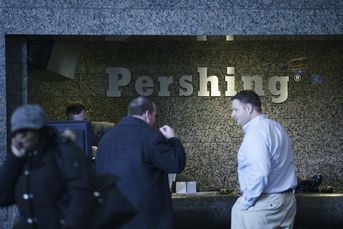Envestnet is the industry’s 800-pound tech gorilla

Envestnet says it wants to be advisers' one-stop shop for investment services and technology. So far, it has been willing to put its money where its mouth is.
Envestnet says it wants to be financial advisers’ one-stop shop for investment services and technology. So far, it has been willing to put its money where its mouth is.
In the last five years, Envestnet has shelled out more than $800 million to acquire eight companies, the latest and most expensive being the $590 million purchase of Yodlee Inc., a cloud-based data analytics firm, announced Aug. 10.
“It’s what has been missing,” said Bill Crager, president of Envestnet. “We’ve got a very comprehensive wealth management and investment management platform, but we really haven’t engaged at all in the consumer finance part of an investor’s life.”
With the Yodlee acquisition, advisers’ clients will be able to link their bank and credit card information to their advisers’ platform to create a fuller picture of their net worth. By using the data aggregated by the software, advisers will be able to gauge what investment strategies they should implement for their clients.
“Bank accounts and credit card information or mortgages have been separate from investment life,” Mr. Crager said. “By acquiring Yodlee, we pull those pieces together in a very powerful way.”
Yodlee is the third major acquisition Envestnet has made this year. In February it bought online investment platform Upside for an undisclosed sum and in May, it spent $30.5 million to pick up financial planning software Finance Logix.
(Also last week, the company said it would make NextShares, a hybrid of active mutual funds and ETFs created by asset manager Eaton Vance, available to some of its 41,000 affiliated financial advisers. The concept has received regulatory approval but funds are not yet available.)
ALL IN ONE PLACE
Envestnet’s strategy is to build a platform that offers all of the services and software that advisers need so they don’t have to spend time and money doing it themselves. And it is counting on the fact that as advisers continue to flee wirehouses and other broker-dealers to start their own advisory practices, they will appreciate finding all of this in one place.
But to be able to offer everything advisers want, Envestnet has had to open its checkbook.
“One of our key challenges is to just keep up with the pace of change that our advisers are asking us to do,” said Jud Bergman, chief executive of Envestnet.
Incorporating its acquisitions in a profitable way is also a challenge. After peaking at about $56 in early February, Envestnet’s shares have been trending down and took a beating the day after the Yodlee acquisition was announced, dropping 35% to $29.38. Last week, the stock traded in the $30-$35 range
On the same day it announced the Yodlee deal, Envestnet reported second-quarter earnings of $2.5 million on sales of $103 million, compared with $3.7 million on sales of $85 million in the year-ago period.
In a note to clients reiterating a neutral position on the stock, Alex Kramm, an analyst at UBS, said earnings met expectations, but investors appeared to question the Yodlee acquisition.
“At first glance,” the analyst wrote, “Yodlee appears to be unrelated to [Envestnet’s] core model and sends the combined company in a new, uncertain direction (at a big price tag). Based on the shares’ performance today, we believe that investors clearly also question the deal and direction of the company. While the true opportunity set of Yodlee could become more obvious over time, we are comfortable remaining on the sidelines for now.”
Jeff Houston, a senior research analyst with Northland Capital Markets, said investors thought the strategic rationale behind Yodlee wasn’t explained well, but that they should be patient as Envestnet completes the acquisition.
“I think it is a very severe overreaction,” he said.
Envestnet takes two approaches to incorporating its acquisitions: either placing them on its platform as is, as it did with portfolio manager Tamarac, or breaking apart an acquisition’s technology and rebuilding it on the platform, as it is doing with Upside, the adviser-facing robo-adviser.
Mike Apker, executive vice president and managing director of Envestnet’s Advisor Suite, said acquisitions such as Tamarac put the company in a position it otherwise would not be in.
“It is really opening new markets. It would have taken us longer to get to where the company we acquired is operating,” Mr. Apker said.
Still, not everyone is sold on Envestnet’s strategy.
“Envestnet has the advantage of a lot of scale,” said Lex Sokolin, partner and chief operating officer of competitor Vanare. “But the disadvantage is that they try to take pieces that are different … and try to fit them together.”
LIMITS CUSTOMER CHOICE
Eric Clarke, CEO of Orion Advisor Services, another Envestnet competitor, said Envestnet limits customer choice by bundling its services, something Orion avoids. Mr. Clarke said his company offers an open-architecture system so advisers have flexibility to choose the third-party vendors they want.
“When you step back and look at all of those purchases, Envestnet seems to be pursuing the strategy of going to market with an offering that represents tightly integrated products,” Mr. Clarke said. “It’s certainly appealing to some of their clients, but we at Orion are pursuing a different strategy. We believe the adviser knows their business best. We don’t believe it’s our business to tell advisers what technologies they should use. They should pick their own.”
Not according to Lori Hardwick, group president of adviser services at Envestnet, who said the company’s goal is to make it as simple of a process as possible for the adviser — and that comes through end-to-end integration.
“I think advisers are realizing going out and trying to find the best-in-breed point-by-point solutions is a difficult task,” Ms. Hardwick said.
Mr. Crager, Envestnet’s president, said having individual pieces that advisers have to integrate themselves makes “scale hard to achieve.” Advisers after all have complained on numerous occasions that the technology they purchase to integrate with other programs they already have doesn’t always mesh as well as they are advertised.
Joel Bruckenstein, founder of Technology Tools for Today, said that ultimately, it’s a matter of personal choice for advisers.
“There are some firms that are happier to put all their eggs in one basket if they are confident the firm they are working with is capable of providing them a good service across all applications,” Mr. Bruckenstein said. “And some firms are more content to take either a best-of-breed approach or have a third party as their integrator.”
Michael Minter, a financial adviser at Financial Synergies Asset Management in Houston, said he’s used Envestnet and Tamarac for more than a decade and loves the capabilities, but would like to see more open architecture, especially as new companies are acquired. For example, he uses eMoney as his financial-planning software and wouldn’t want to make the switch to Finance Logix so quickly.
“It’s tough to abandon a product you’ve been using for a long time,” Mr. Minter said, “so it can’t be all or nothing.”
Crain’s Chicago Business contributed to this story.
Learn more about reprints and licensing for this article.







